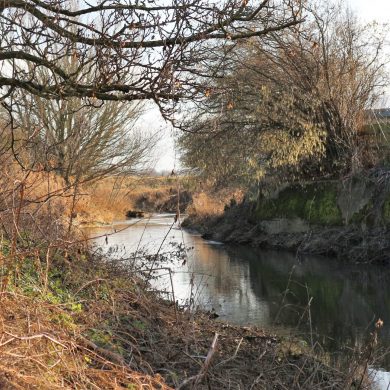Source Chris Todd via Atlantic Salmon Federation.
It is an enduring mystery how juvenile salmon, at 12cm long and weighing perhaps only 20g, can leave a Scottish river in springtime, undertake a sojourn of thousands of kilometres around the North Atlantic, and return between one and four years later to their rivers to spawn.
This is for good reason. A returning salmon, known as a grilse, will have grown 100-fold in size from the rich feeding to be found at sea. But the journey is not without risk. Between 80-90% of grilse, and fewer still multi-winter fish, will not survive their journey.
But the serious problems wild salmon now face at sea go beyond the hardships of their itinerant lifecycle. These have been intensively researched throughout Europe and North America, and it’s clear that in recent decades salmon mortality rates at sea have increased enormously. While possible causes include natural predation, disease and parasites, or being caught up in fishery by-catch, the truth is we just don’t know.
My research, in collaboration with Marine Scotland Science, has focused not on mortality rates and population decline, but on the changes in size and quality of salmon returning to Scottish rivers over the past 50 years. This variation seems to stem from the effects of climate change on the ocean, and the anomalously high temperatures salmon find in the North Atlantic.
In 2008 we published a study of quality, or condition factor, of adult salmon returning to Scotland between 1993-2006. This was measured by dividing the observed weight by the expected weight for a fish of that length. The skinny fish, top, is less than its expected weight by more than a quarter (26%), while the bottom fish is illustrative of the long-term norm, being only 4% underweight for its length.
Some individual salmon return in spectacularly good condition, perhaps by chance finding areas of rich feeding. But far more common in recent years are less well nourished salmon showing poor growth. Examining extensive salmon records dating back to 1963, we can see the long-term pattern.
Between 1963-1993 there was nothing unusual. During the late 1990s the average condition increased to a high in 1997, but then fell precipitously until 2006. Salmon anglers in Scotland recall 2006 as the “year of skinny grilse” – understandably so, because that year’s salmon were not only in poor condition but also unusually short.
Since 2006 the average salmon length of salmon has increased slightly but the average condition factor is consistently low, fluctuating around at least 7% below average. The data up to 2013 show no signs of improvement. For example, between 1997-2010 the average weight of grilse returning to the River North Esk in east Scotland fell by 29% from 2.35kg to 1.67kg. And for summer-returning salmon that stayed at sea for two winters the average has plummeted from 6.18kg to only 3.63kg.

Clearly, salmon are currently having a tough time of it at sea. Warming of the North Atlantic is exerting an indirect effect on the fish, as rising temperatures change the abundance and quality of the plankton salmon feed upon. These major, climate-related shifts in oceanic plankton are well documented throughout the North Atlantic. But this is more problematic still for salmon, as they stop feeding before re-entering the river and then starve themselves while swimming upstream, relying entirely on stored fats to survive the months ahead before their autumn spawning. We’ve found that, at the point the re-entry to the river, the skinniest salmon, as much as a third underweight, have up to 80% less fat reserves than the norm, with obvious implications for their chance of survival and reproduction.
Taken together, this presents a rather dismal prospect for wild salmon. Many fish are returning smaller, skinnier and with lower fat reserves than in the past. Smaller fish produce fewer eggs, and their lack of fat reserves probably means they are of poorer quality. The next generation of juvenile smolts that arise from spawnings migrate to sea and encounter North Atlantic waters that are persistently warmer and food-poor.
The concern is that this might comprise a downward spiral for wild salmon. Pragmatically, there is not a great deal that fishery managers can do to alleviate the salmon’s problems at sea. And in fairness salmon anglers are increasingly aware of conservation needs; catch and release is widely practiced on most salmon rivers in Scotland. But we can manage freshwater habitats to maximise survival and spawning success of those salmon that do return to our rivers, and of juveniles prior to their journey to sea.
As an ecologist, I am endlessly curious as to how salmon are able to migrate such distances across the ocean, with no prior experience, parental guidance or Sat Nav – although part of me actually hopes we never do unravel this intriguing migration mystery. But for us to effectively conserve salmon stocks for the future it is critical to fully understand why our salmon are currently suffering so, in rivers and at sea, and to do all we can to maximise the production of juveniles.
This approach might be considered as ‘lambs to the slaughter’, but over millions of years salmon have survived ice ages and eras of global warming. Helping salmon populations recover naturally is clearly a better strategy than rearing them artificially.
You may view the original feature HERE

